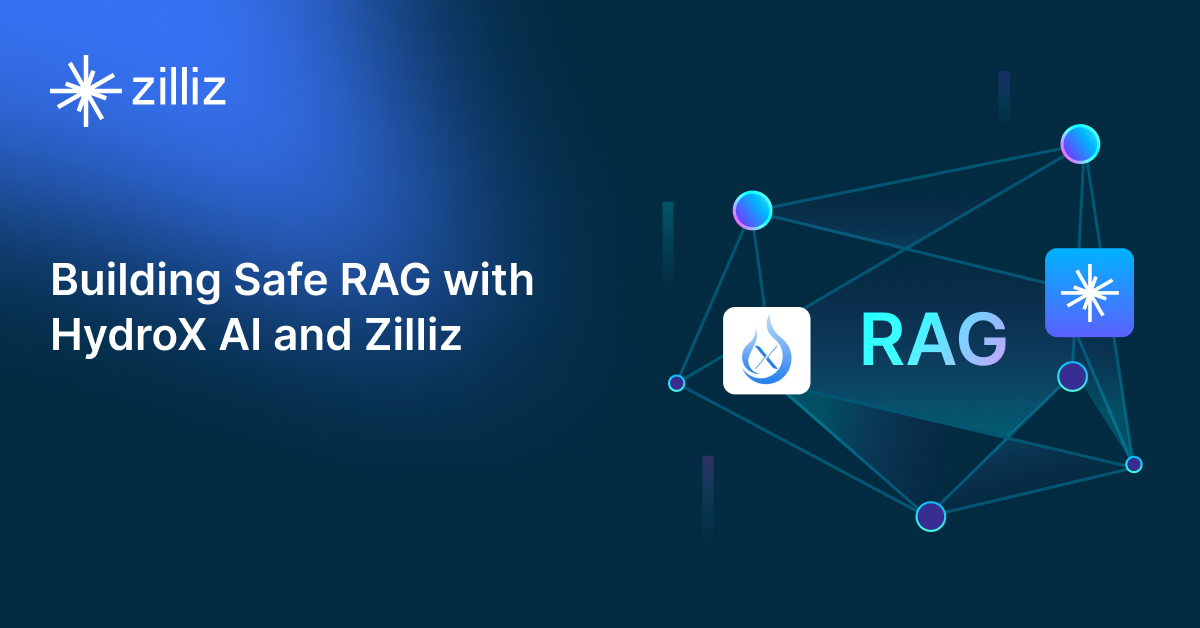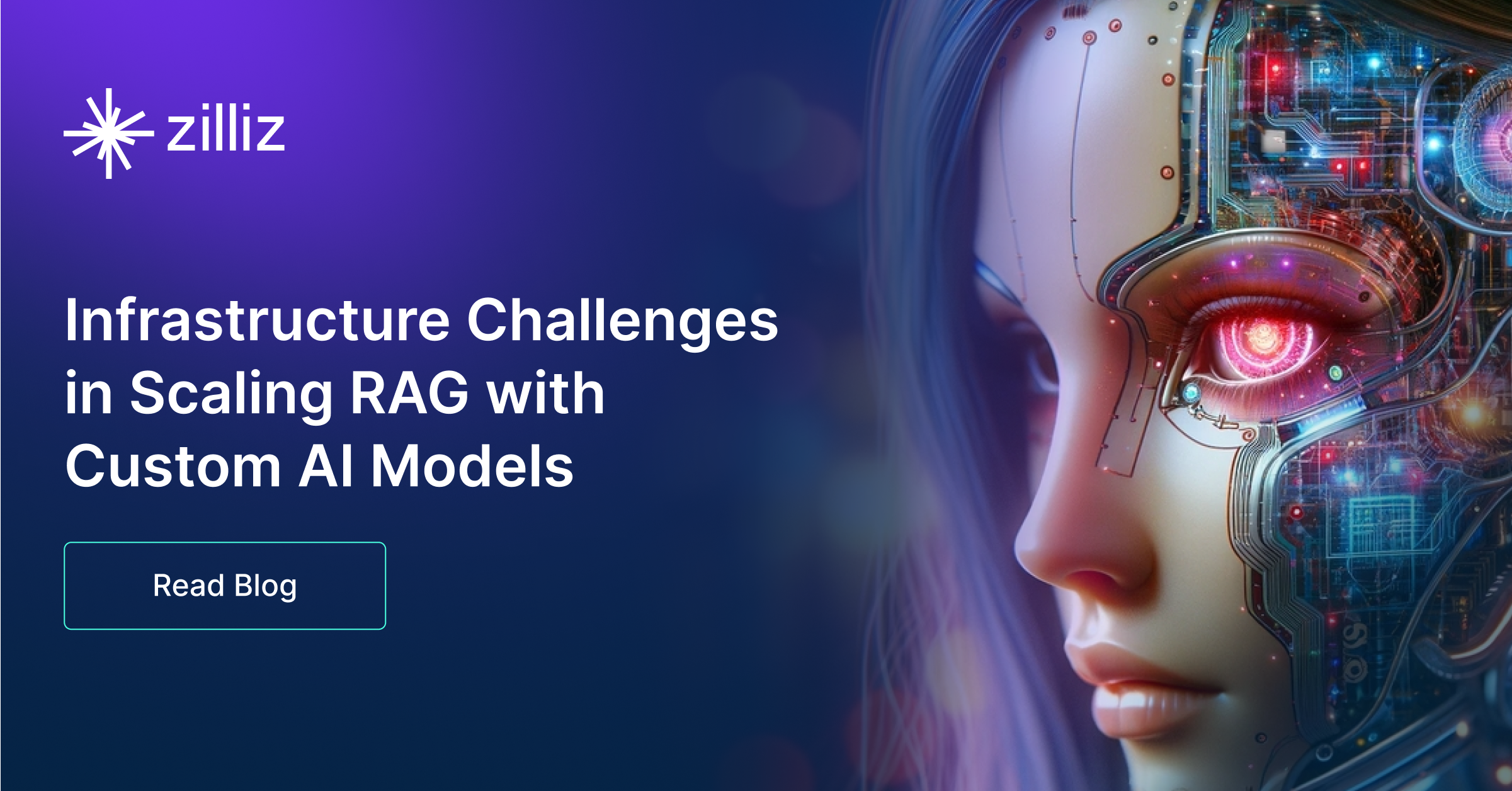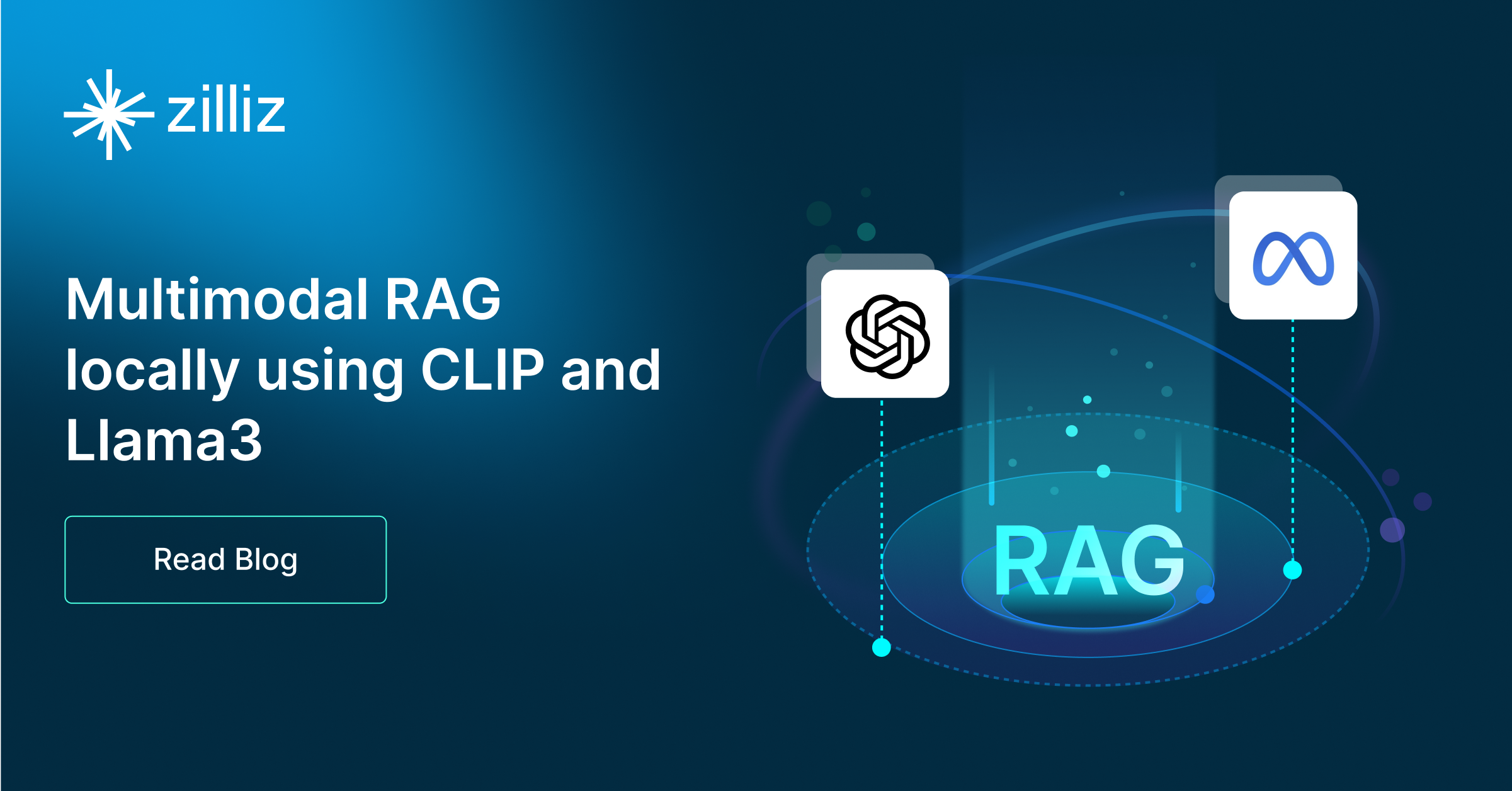Build RAG Chatbot with LangChain, OpenSearch, Groq Qwen2.5 32B Instruct, and NVIDIA embed-qa-4
Introduction to RAG
Retrieval-Augmented Generation (RAG) is a game-changer for GenAI applications, especially in conversational AI. It combines the power of pre-trained large language models (LLMs) like OpenAI’s GPT with external knowledge sources stored in vector databases such as Milvus and Zilliz Cloud, allowing for more accurate, contextually relevant, and up-to-date response generation. A RAG pipeline usually consists of four basic components: a vector database, an embedding model, an LLM, and a framework.
Key Components We'll Use for This RAG Chatbot
This tutorial shows you how to build a simple RAG chatbot in Python using the following components:
- LangChain: An open-source framework that helps you orchestrate the interaction between LLMs, vector stores, embedding models, etc, making it easier to integrate a RAG pipeline.
- OpenSearch: An open-source search and analytics suite derived from Elasticsearch. It offers robust full-text search and real-time analytics, with vector search available as an add-on for similarity-based queries, extending its capabilities to handle high-dimensional data. Since it is just a vector search add-on rather than a purpose-built vector database, it lacks scalability and availability and many other advanced features required by enterprise-level applications. Therefore, if you prefer a much more scalable solution or hate to manage your own infrastructure, we recommend using Zilliz Cloud, which is a fully managed vector database service built on the open-source Milvus and offers a free tier supporting up to 1 million vectors.)
- Groq Qwen2.5 32B Instruct: Groq Qwen2.5 is a large-scale AI language model designed for instruction-following tasks. With 32 billion parameters, it excels in generating coherent, contextually relevant responses and understanding complex queries. Ideal for applications in customer service, content creation, and educational tools, it enhances user interactions through its robust and adaptable capabilities.
- NVIDIA embed-qa-4: This model specializes in question answering tasks, leveraging cutting-edge embedding techniques to enhance accuracy and comprehension. Its strengths lie in understanding context and retrieving precise information effectively. Ideal for applications in customer support, educational platforms, and any domain needing rapid, context-aware responses to user inquiries.
By the end of this tutorial, you’ll have a functional chatbot capable of answering questions based on a custom knowledge base.
Note: Since we may use proprietary models in our tutorials, make sure you have the required API key beforehand.
Step 1: Install and Set Up LangChain
%pip install --quiet --upgrade langchain-text-splitters langchain-community langgraph
Step 2: Install and Set Up Groq Qwen2.5 32B Instruct
pip install -qU "langchain[groq]"
import getpass
import os
if not os.environ.get("GROQ_API_KEY"):
os.environ["GROQ_API_KEY"] = getpass.getpass("Enter API key for Groq: ")
from langchain.chat_models import init_chat_model
llm = init_chat_model("qwen-2.5-32b", model_provider="groq")
Step 3: Install and Set Up NVIDIA embed-qa-4
pip install -qU langchain-nvidia-ai-endpoints
import getpass
import os
if not os.environ.get("NVIDIA_API_KEY"):
os.environ["NVIDIA_API_KEY"] = getpass.getpass("Enter API key for NVIDIA: ")
from langchain_nvidia_ai_endpoints import NVIDIAEmbeddings
embeddings = NVIDIAEmbeddings(model="NV-Embed-QA")
Step 4: Install and Set Up OpenSearch
pip install --upgrade --quiet opensearch-py langchain-community
from langchain_community.vectorstores import OpenSearchVectorSearch
opensearch_vector_search = OpenSearchVectorSearch(
"http://localhost:9200",
"embeddings",
embedding_function
)
Step 5: Build a RAG Chatbot
Now that you’ve set up all components, let’s start to build a simple chatbot. We’ll use the Milvus introduction doc as a private knowledge base. You can replace it with your own dataset to customize your RAG chatbot.
import bs4
from langchain import hub
from langchain_community.document_loaders import WebBaseLoader
from langchain_core.documents import Document
from langchain_text_splitters import RecursiveCharacterTextSplitter
from langgraph.graph import START, StateGraph
from typing_extensions import List, TypedDict
# Load and chunk contents of the blog
loader = WebBaseLoader(
web_paths=("https://milvus.io/docs/overview.md",),
bs_kwargs=dict(
parse_only=bs4.SoupStrainer(
class_=("doc-style doc-post-content")
)
),
)
docs = loader.load()
text_splitter = RecursiveCharacterTextSplitter(chunk_size=1000, chunk_overlap=200)
all_splits = text_splitter.split_documents(docs)
# Index chunks
_ = vector_store.add_documents(documents=all_splits)
# Define prompt for question-answering
prompt = hub.pull("rlm/rag-prompt")
# Define state for application
class State(TypedDict):
question: str
context: List[Document]
answer: str
# Define application steps
def retrieve(state: State):
retrieved_docs = vector_store.similarity_search(state["question"])
return {"context": retrieved_docs}
def generate(state: State):
docs_content = "\n\n".join(doc.page_content for doc in state["context"])
messages = prompt.invoke({"question": state["question"], "context": docs_content})
response = llm.invoke(messages)
return {"answer": response.content}
# Compile application and test
graph_builder = StateGraph(State).add_sequence([retrieve, generate])
graph_builder.add_edge(START, "retrieve")
graph = graph_builder.compile()
Test the Chatbot
Yeah! You've built your own chatbot. Let's ask the chatbot a question.
response = graph.invoke({"question": "What data types does Milvus support?"})
print(response["answer"])
Example Output
Milvus supports various data types including sparse vectors, binary vectors, JSON, and arrays. Additionally, it handles common numerical and character types, making it versatile for different data modeling needs. This allows users to manage unstructured or multi-modal data efficiently.
Optimization Tips
As you build your RAG system, optimization is key to ensuring peak performance and efficiency. While setting up the components is an essential first step, fine-tuning each one will help you create a solution that works even better and scales seamlessly. In this section, we’ll share some practical tips for optimizing all these components, giving you the edge to build smarter, faster, and more responsive RAG applications.
LangChain optimization tips
To optimize LangChain, focus on minimizing redundant operations in your workflow by structuring your chains and agents efficiently. Use caching to avoid repeated computations, speeding up your system, and experiment with modular design to ensure that components like models or databases can be easily swapped out. This will provide both flexibility and efficiency, allowing you to quickly scale your system without unnecessary delays or complications.
OpenSearch optimization tips
To optimize OpenSearch in a Retrieval-Augmented Generation (RAG) setup, fine-tune indexing by enabling efficient mappings and reducing unnecessary stored fields. Use HNSW for vector search to speed up similarity queries while balancing recall and latency with appropriate ef_search and ef_construction values. Leverage shard and replica settings to distribute load effectively, and enable caching for frequent queries. Optimize text-based retrieval with BM25 tuning and custom analyzers for better relevance. Regularly monitor cluster health, index size, and query performance using OpenSearch Dashboards and adjust configurations accordingly.
Groq Qwen2.5 32B Instruct optimization tips
To optimize the Groq Qwen2.5 32B Instruct model in a Retrieval-Augmented Generation (RAG) setup, consider implementing mixed precision training to reduce memory usage and enhance throughput. Fine-tune hyperparameters such as learning rate and batch size based on your dataset to improve performance. Utilize efficient indexing methods for retrieval components to speed up query responses. Additionally, cache frequent queries and responses to minimize redundant computations. Regularly assess model performance on validation data to identify any degradation over time, allowing for timely retraining or adjustments. Lastly, leverage data augmentation techniques to enrich your training dataset, which can help the model generalize better across unseen queries.
NVIDIA embed-qa-4 optimization tips
NVIDIA embed-qa-4 is a high-performance embedding model optimized for question-answering tasks in RAG systems. Improve retrieval efficiency by generating embeddings at both the document and sentence levels, allowing for granular matching. Use similarity threshold tuning to balance precision and recall when retrieving documents. For large-scale applications, employ GPU-accelerated ANN search frameworks such as FAISS with optimized indexing parameters. Cache frequently used embeddings to reduce API overhead and speed up query processing. When handling dynamic knowledge bases, implement scheduled re-embedding of updated documents to maintain search relevance. Consider fine-tuning retrieval pipelines by integrating metadata-based filters alongside vector search for improved contextual accuracy.
By implementing these tips across your components, you'll be able to enhance the performance and functionality of your RAG system, ensuring it’s optimized for both speed and accuracy. Keep testing, iterating, and refining your setup to stay ahead in the ever-evolving world of AI development.
RAG Cost Calculator: A Free Tool to Calculate Your Cost in Seconds
Estimating the cost of a Retrieval-Augmented Generation (RAG) pipeline involves analyzing expenses across vector storage, compute resources, and API usage. Key cost drivers include vector database queries, embedding generation, and LLM inference.
RAG Cost Calculator is a free tool that quickly estimates the cost of building a RAG pipeline, including chunking, embedding, vector storage/search, and LLM generation. It also helps you identify cost-saving opportunities and achieve up to 10x cost reduction on vector databases with the serverless option.
 Calculate your RAG cost
Calculate your RAG cost
What Have You Learned?
By diving into this tutorial, you’ve unlocked the core magic of building a RAG system from the ground up! You now understand how LangChain acts as the glue, seamlessly orchestrating workflows between components like OpenSearch (your powerful vector database), the lightning-fast Groq Qwen2.5 32B Instruct model for generating human-like responses, and NVIDIA’s embed-qa-4 model for transforming text into rich, searchable embeddings. Together, these tools create a pipeline that retrieves relevant information, grounds it in context, and generates answers that feel natural and informed. You’ve seen firsthand how OpenSearch’s scalability handles dense vector data efficiently, while Groq’s speed and NVIDIA’s embedding precision ensure your system is both accurate and responsive. Plus, those optimization tips—like tweaking chunk sizes or balancing retrieval thresholds—equip you to fine-tune performance for real-world scenarios. And don’t forget the free RAG cost calculator! It’s your secret weapon for budgeting compute resources without sacrificing quality, making experimentation accessible and cost-effective.
Now that you’ve got the blueprint, it’s time to run with it! Imagine the applications you could build—smart chatbots, research assistants, or personalized recommendation engines. The tools are in your hands, and the possibilities are endless. Start small, iterate often, and lean into the flexibility of this stack to solve problems in ways that excite you. Whether you’re optimizing for speed, accuracy, or creativity, remember: every tweak and experiment brings you closer to something groundbreaking. So fire up your IDE, play with those embeddings, and let your curiosity guide you. The future of intelligent applications is yours to shape—go build something amazing! 🚀
Further Resources
🌟 In addition to this RAG tutorial, unleash your full potential with these incredible resources to level up your RAG skills.
- How to Build a Multimodal RAG | Documentation
- How to Enhance the Performance of Your RAG Pipeline
- Graph RAG with Milvus | Documentation
- How to Evaluate RAG Applications - Zilliz Learn
- Generative AI Resource Hub | Zilliz
We'd Love to Hear What You Think!
We’d love to hear your thoughts! 🌟 Leave your questions or comments below or join our vibrant Milvus Discord community to share your experiences, ask questions, or connect with thousands of AI enthusiasts. Your journey matters to us!
If you like this tutorial, show your support by giving our Milvus GitHub repo a star ⭐—it means the world to us and inspires us to keep creating! 💖
- Introduction to RAG
- Key Components We'll Use for This RAG Chatbot
- Step 1: Install and Set Up LangChain
- Step 2: Install and Set Up Groq Qwen2.5 32B Instruct
- Step 3: Install and Set Up NVIDIA embed-qa-4
- Step 4: Install and Set Up OpenSearch
- Step 5: Build a RAG Chatbot
- Optimization Tips
- RAG Cost Calculator: A Free Tool to Calculate Your Cost in Seconds
- What Have You Learned?
- Further Resources
- We'd Love to Hear What You Think!
Content
Vector Database at Scale
Zilliz Cloud is a fully-managed vector database built for scale, perfect for your RAG apps.
Try Zilliz Cloud for Free


